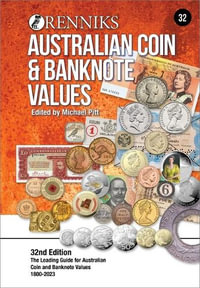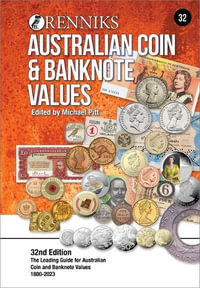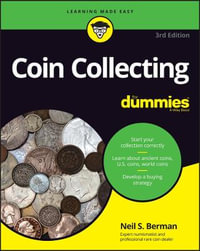| List of figures | p. viii |
| List of maps | p. xii |
| List of tables | p. xiii |
| Acknowledgements | p. xiv |
| List of abbreviations | p. xvi |
| Introduction | p. 1 |
| Coinage in southern England and its neighbours 757-865 | p. 4 |
| The historical setting: Mercia,Wessex and the Vikings | p. 9 |
| Money In Its Political Context | p. 13 |
| Kings, states and power in England and its neighbours | p. 16 |
| Royal resources | p. 23 |
| Land and warriors | p. 29 |
| Towns and trade | p. 32 |
| Conclusion | p. 36 |
| Coinage as a royal resource: the Roman legacy | p. 37 |
| Emperors, kings and minting | p. 39 |
| Minting profits | p. 41 |
| Looking at Coinage: Iconography and Inscriptions | p. 47 |
| Coins, kings and propaganda | p. 47 |
| 'Portraits' | p. 53 |
| Offa, novus Constantinus? | p. 54 |
| After Offa | p. 64 |
| Archiepiscopal portraits | p. 67 |
| Crosses and other religious iconography | p. 69 |
| Inscriptions | p. 72 |
| Numismatic titulature | p. 79 |
| Conclusion | p. 84 |
| Authority and Minting I: The King | p. 87 |
| Royal coinage in England before c. 740 | p. 90 |
| The establishment of royal coinages in northwest Europe c. 740-c. 770 | p. 96 |
| The development of royal coinage: the Mercian regime 757-c. 825 | p. 100 |
| The development of royal coinage: the West Saxon regime c. 825-65 | p. 106 |
| Case studies in royal coinage I: gold coinage | p. 112 |
| Case studies in royal coinage II: the interstices of royal coinage | p. 117 |
| Authority and Minting II: Mints, Die-Cutters and Moneyers | p. 128 |
| Mint-towns | p. 128 |
| Moneyers and die-cutters | p. 132 |
| The moneyers of Anglo-Saxon England | p. 142 |
| Origins and parallels | p. 142 |
| Connections and positions | p. 146 |
| Case studies in the role of moneyers I: favoured moneyers | p. 150 |
| Case studies in the role of moneyers II: the Anonymous coinage | p. 153 |
| Kings, mints and moneyers | p. 154 |
| Value Judgements: Weight and Fineness | p. 156 |
| Metal standards | p. 157 |
| Silver sources | p. 157 |
| Fineness | p. 161 |
| Weight standards | p. 168 |
| Offa's weight standards | p. 171 |
| Offa, Charlemagne and the coin reforms of 792-4 | p. 175 |
| Metrology after 792/3 | p. 178 |
| Production of Coinage | p. 181 |
| Coinage and recoinage | p. 181 |
| The scale of minting | p. 184 |
| The productivity of moneyers | p. 192 |
| Contexts and comparisons | p. 194 |
| Conclusion | p. 196 |
| The Circulation of Coinage | p. 199 |
| English money, foreign money | p. 203 |
| Global trends within southern England: 'monetary recession, without geographical retreat' | p. 209 |
| A tale of two mints: Canterbury and Ipswich compared | p. 211 |
| London | p. 214 |
| Rochester and Southampton: the minor mints | p. 216 |
| Coin-circulation and kings, moneyers and clergy | p. 218 |
| The rate of loss: monetization and production compared | p. 224 |
| The forces behind circulation | p. 229 |
| The monetary economy of southern England | p. 229 |
| Changes in the monetary economy | p. 231 |
| Contexts of circulation: pottery and metalwork | p. 239 |
| Contexts of circulation: Francia, Northumbria and Italy | p. 244 |
| Conclusion | p. 251 |
| The Nature of Coin-Use in the Early Middle Ages | p. 252 |
| Background: Mauss, Pirenne, Grierson and after | p. 252 |
| Coins and commerce? | p. 259 |
| Gifts and coins | p. 260 |
| Case study: payments in Anglo-Saxon charters | p. 267 |
| Coinage and exchange in context | p. 273 |
| Coinage, markets and peasants | p. 276 |
| The problem of small change | p. 284 |
| Conclusion: coinage in the economy | p. 291 |
| Conclusion | p. 293 |
| Bibliography | p. 296 |
| Index | p. 340 |
| Table of Contents provided by Ingram. All Rights Reserved. |













![Renniks Australian and New Zealand Token Values : [Ratv] - Michael T. Pitt](https://www.booktopia.com.au/covers/200/9780980524895/null/renniks-australian-and-new-zealand-token-values.jpg)











